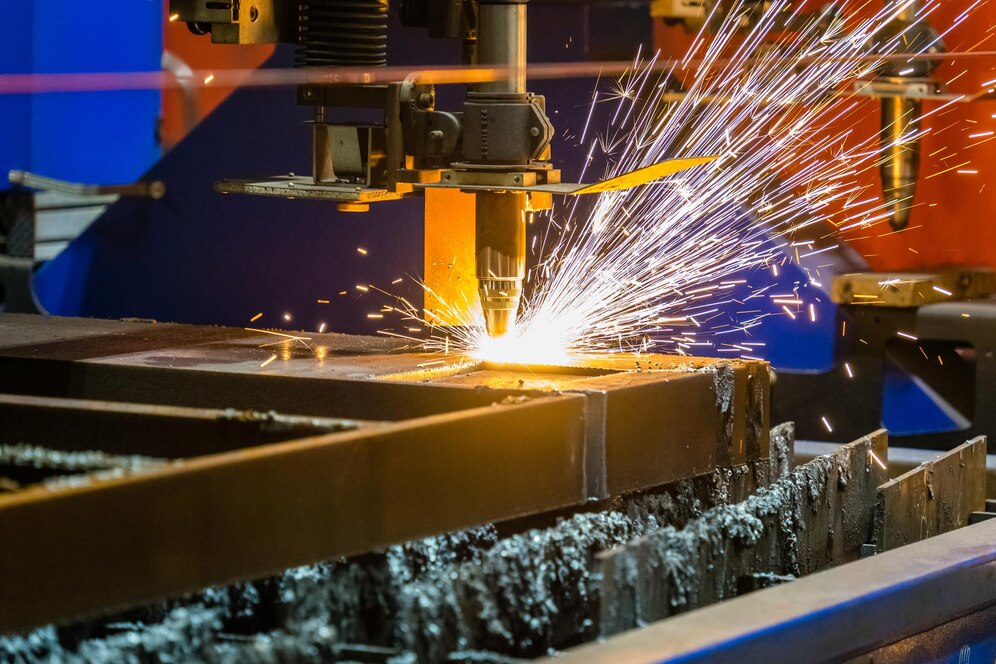In the dynamic realm of manufacturing, sheet stamping holds a significant position, serving as a cornerstone process in the fabrication of diverse components spanning across industries.
Whether it’s crafting automotive parts, intricate electronics casings, or aerospace structures, sheet metal stamping plays an indispensable role in shaping raw metal into precise forms with commendable efficiency.
However, this traditional practice has undergone a profound metamorphosis propelled by technological integration. In this comprehensive exploration, we delve into the innovative solutions propelling metal stamping into a new era of efficiency and precision.
The Evolution of Sheet Metal Stamping
Over the years, sheet metal stamping has undergone a transformative evolution driven by technological advancements. From improved die materials to real-time monitoring systems, innovations have revolutionized efficiency and quality in the stamping process.
Advanced Die Materials and Coatings
Traditional stamping dies often suffered from wear and corrosion, necessitating frequent replacements and disrupting production.
However, advancements in die materials like carbide and high-speed steel have greatly improved durability and wear resistance.
These materials extend the lifespan of stamping dies significantly. Additionally, specialized coatings such as diamond-like carbon (DLC) coatings enhance lubricity, reducing friction during stamping and further prolonging tool longevity while minimizing maintenance needs.
Real-time Monitoring and Control Systems
Historically, metal stamping relied on manual observation and periodic inspections, resulting in reactive measures and quality issues.
The introduction of real-time monitoring and control systems has transformed this aspect of stamping. Embedded sensors in presses and tooling gather data on parameters like temperature, pressure, and tool wear in real-time.
Advanced analytics detect anomalies, enabling proactive interventions to maintain process stability and quality. These systems also enable predictive maintenance scheduling, preventing equipment failures and enhancing production efficiency and quality assurance.
Integration of CAD/CAM Software
Revolutionizing sheet stamping, the integration of CAD/CAM software merges design precision with manufacturing efficiency.
Empowering engineers to seamlessly transition from concept to production, this integration optimizes workflows and accelerates innovation in metalworking processes.
Computer-Aided Design (CAD)
Empowering engineers to create intricate designs with unparalleled precision and accuracy, CAD software serves as the backbone of modern metal stamping.
By digitally conceptualizing components, designers can iterate rapidly and optimize geometries for enhanced performance.
Computer-Aided Manufacturing (CAM)
Seamlessly bridging the gap between design and production, CAM software generates tool paths and orchestrates manufacturing processes with unparalleled efficiency.
This integration minimizes lead times and streamlines production workflows, propelling sheet stamping into the realm of digital manufacturing.
Advancements in Automation
Reshaping sheet stamping, advancements in automation introduce precision-driven processes and stringent quality control measures.
From robotic integration to automated inspection systems, these innovations optimize efficiency and uphold product integrity, driving productivity and customer satisfaction.
Robotic Integration
The advent of robotic arms and automated material handling systems has ushered in a new era of efficiency in metal stamping.
By replacing manual labor with precision-driven automation, manufacturers can mitigate human error and significantly enhance productivity.
Automated Inspection Systems
Leveraging advanced imaging technologies and machine learning algorithms, automated inspection systems ensure stringent quality control standards are met.
By detecting defects in real-time, these systems uphold the integrity of the final product, bolstering customer satisfaction and brand reputation.
Precision Tooling and Die Technologies
Redefining metal stamping, precision tooling and die technologies deliver unmatched precision and durability.
High-speed machining and advanced coatings enable manufacturers to shorten production cycles, enhance quality, and optimize operational efficiency.
High-Speed Machining
Pioneering high-speed machining techniques enable the production of intricate die shapes with unparalleled precision and repeatability.
This technological prowess translates into shorter production cycles and enhanced product quality, fostering a competitive edge in the market.
Advanced Coatings and Surface Treatments
The application of advanced coatings and surface treatments to stamping tools prolongs their lifespan and minimizes wear.
This translates into prolonged production runs and reduced downtime, optimizing operational efficiency and driving cost savings.
Innovative Materials and Alloys
Advancements in material science are revolutionizing sheet stamping, opening doors to unprecedented possibilities.
Tailor-made alloys and breakthrough materials offer enhanced formability and versatility, driving innovation and expanding design capabilities.
Material Science Breakthroughs
Breakthroughs in material science have expanded the horizons of sheet stamping, ushering in a new era of possibilities.
From high-strength steel to lightweight aluminum alloys, manufacturers now have access to a plethora of materials tailored to specific applications.
Tailor-Made Alloys
The development of tailor-made alloys engineered for specific applications enhances formability and enables the fabrication of complex geometries with unparalleled ease. This versatility fosters innovation and unlocks new avenues for product design and functionality.
Simulation and Virtual Prototyping
Revolutionizing sheet stamping, simulation and virtual prototyping offer comprehensive pre-production analysis.
Engineers leverage advanced software tools such as Finite Element Analysis (FEA) to optimize designs, shorten time-to-market, and uphold superior product quality.
Virtual Prototyping
By leveraging advanced simulation software, engineers can visualize and analyze the entire metal stamping process before physical production commences.
This virtual prototyping capability facilitates rapid iteration and optimization, reducing time-to-market and enhancing product quality.
Finite Element Analysis (FEA)
FEA simulations enable engineers to predict material behavior under various loading conditions, ensuring structural integrity and minimizing material waste.
By simulating real-world scenarios, manufacturers can fine-tune designs and mitigate potential risks before production begins.
Industry 4.0 and IoT Integration
Reshaping metal stamping, Industry 4.0 and IoT integration forge smart factory ecosystems.
Through interconnected sensors and predictive maintenance algorithms, manufacturers optimize production processes, bolstering efficiency and minimizing downtime.
Smart Factory Ecosystems
Industry 4.0 principles and IoT technologies converge to create smart factory ecosystems, revolutionizing sheet stamping.
Interconnected sensors and data analytics enable real-time monitoring and optimization of production processes, driving efficiency and productivity.
Predictive Maintenance Algorithms
By harnessing predictive maintenance algorithms, manufacturers can anticipate equipment failures and schedule maintenance proactively.
This predictive capability minimizes unplanned downtime and optimizes asset utilization, ensuring seamless production operations.
Conclusion
The integration of technology has heralded a new dawn for sheet metal stamping, ushering in an era of unparalleled innovation and efficiency.
From CAD/CAM software to robotic automation and advanced materials, every facet of the process has been transformed to meet the demands of modern manufacturing.
As we chart a course towards the future, the relentless pursuit of innovative solutions continues to propel sheet metal stamping into uncharted territories, promising a realm of endless possibilities and boundless opportunities.




